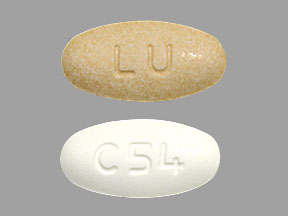Amlodipine / Telmisartan Dosage
Medically reviewed by Drugs.com. Last updated on Aug 6, 2025.
Applies to the following strengths: 5 mg-40 mg; 10 mg-40 mg; 5 mg-80 mg; 10 mg-80 mg
Usual Adult Dose for:
Additional dosage information:
Usual Adult Dose for Hypertension
Amlodipine 5 to 10 mg-Telmisartan 40 to 80 mg orally once a day
Maximum dose: Amlodipine 10 mg-Telmisartan 80 mg orally once a day
Comments:
- Correct volume and salt depletion before initiating therapy.
- Dose titration with the individual components is recommended before switching to this drug; treatment may be initiated with this drug if it is unlikely that blood pressure would be controlled with monotherapy; the usual starting dose for treatment initiation is amlodipine 5 mg-telmisartan 40 mg once a day.
- Patients who experience any dose limiting adverse reactions with amlodipine 10 mg monotherapy may be switched to amlodipine 5 mg-telmisartan 40 mg once a day to reduce the amlodipine dose without reducing the overall expected antihypertensive response.
- Start with a low initial amlodipine dose in patients 65 years or older; initial therapy with this drug is not recommended in patients 75 years or older.
- May increase dose after 2 weeks.
Renal Dose Adjustments
Mild to moderate renal dysfunction: No adjustment recommended
Severe renal dysfunction: Titrate slowly
Liver Dose Adjustments
Liver dysfunction: Not recommended for initial therapy
Biliary obstructive disorder: Initiate at low doses and titrate slowly
Precautions
US BOXED WARNING:
- FETAL TOXICITY: If pregnancy is detected, discontinue this drug as soon as possible. Drugs that act directly on the renin-angiotensin system (RAS) can cause injury and death to the developing fetus.
Safety and efficacy have not been established in patients younger than 18 years.
Consult WARNINGS section for additional precautions.
Dialysis
Data not available
Other Comments
Administration advice: May take with or without food.
General: Telmisartan plasma concentrations are generally 2 to 3 times higher in females; however, in clinical trials, no significant increases in blood pressure response or orthostatic hypotension were found in women.
Monitoring: Closely monitor patients with heart failure or biliary obstructive disorders who are taking this drug.
Patient advice:
- Females of childbearing age should be informed of the consequences of exposure to this drug during pregnancy; ask these patients to report pregnancies as soon as possible.
- Advise patients to immediately report any signs or symptoms of angioedema (breathing difficulty or swelling of face, eyes, lips, or tongue) and to stop taking this drug until consulting a physician.
- Encourage patients to report any lightheadedness that may occur during treatment initiation and to stop taking this drug until consulting a physician if syncope occurs.
- Dehydration may lead to excess blood pressure reduction; inform patients to contact their healthcare provider if they experience excessive perspiration, vomiting, or diarrhea.
More about amlodipine / telmisartan
- Check interactions
- Compare alternatives
- Pricing & coupons
- Reviews (17)
- Drug images
- Side effects
- During pregnancy
- Drug class: angiotensin II inhibitors with calcium channel blockers
- En español
Patient resources
Other brands
Professional resources
Other brands
Related treatment guides
See also:
Further information
Always consult your healthcare provider to ensure the information displayed on this page applies to your personal circumstances.


